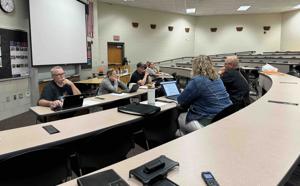Unum Group CIO Shelia Anderson Highlights Tech Leadership Strategies

UPDATE: Shelia Anderson, EVP Chief Information and Digital Officer at Unum Group, is making headlines today as she shares critical insights into the evolving role of CIOs in the tech industry. With a career spanning over three decades, Anderson emphasizes the urgent need for tech leaders to prioritize relationships and continuous learning in an increasingly complex digital landscape.
Anderson, who began her career in the late 1980s, has witnessed firsthand the dramatic transformations in technology. “The internet was my first love,” she states, highlighting her pioneering role in internet consulting at Electronic Data Systems (EDS) and later at the startup Chaos to Order. Her experiences underscore a fundamental shift in IT leadership dynamics, particularly for women navigating a historically male-dominated field.
The landscape has changed significantly since Anderson’s early days, yet she stresses that the essence of effective leadership remains grounded in strong relationships. “How you approach managing your relationships is just as important as the technology itself,” she asserts. This powerful statement reflects a growing awareness among leaders that navigating corporate politics and fostering collaboration are essential for driving innovation.
Anderson’s journey also sheds light on the personal challenges faced by many in tech. Balancing demanding roles with family life has been a struggle, particularly when remote work wasn’t an option. “I reached a point where I felt I was just not doing my best at home or at work,” she recalls. A supportive male advocate helped her navigate this difficult period, allowing her to continue her career while adjusting her work-life balance.
The need for adaptability is more critical than ever. As Anderson explains, the CIO role is evolving beyond traditional IT management. “The expectations are far greater now,” she warns. CIOs must leverage new technologies to drive business value while maintaining operational efficiency. This dual focus is essential in a market where every tech investment must demonstrate tangible results.
Looking ahead, Anderson predicts a shift in job titles within the tech sector. “You’re starting to see a move away from CIO as a title,” she notes, suggesting that emerging roles like Chief Technology and Innovation Officer will become more prevalent. This evolution reflects the expanding scope of responsibilities that tech leaders face today.
Moreover, Anderson emphasizes the importance of collaboration with CFOs to ensure technology investments yield significant business outcomes. “You need to show how these investments are driving value,” she states, reinforcing the need for CIOs to possess strong financial acumen.
Anderson’s commitment to mentorship is equally notable. She actively participates in CIO councils, sharing knowledge and learning from peers across various industries. “One of the beauties of that is you can connect with other executives who have worked inside and outside your industry,” she explains. This network not only fosters professional growth but also empowers others, particularly women, to rise into leadership roles.
As the tech landscape continues to evolve, Anderson’s insights serve as a guiding light for current and aspiring CIOs. Her journey illustrates the profound impact that strong relationships and continuous learning have on achieving success in an ever-changing environment.
NEXT STEPS: Tech leaders are urged to reassess their strategies, focusing on collaboration and ongoing education. As the industry faces unprecedented challenges, the ability to adapt and innovate will be crucial for sustaining growth and driving value. Anderson’s experiences and strategies offer a roadmap for success in this dynamic field.






